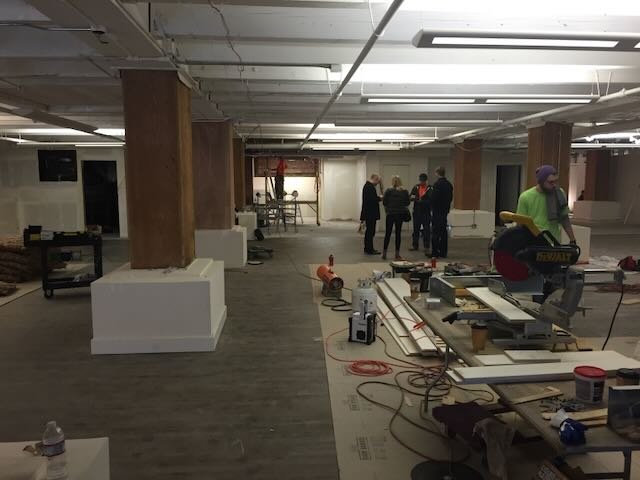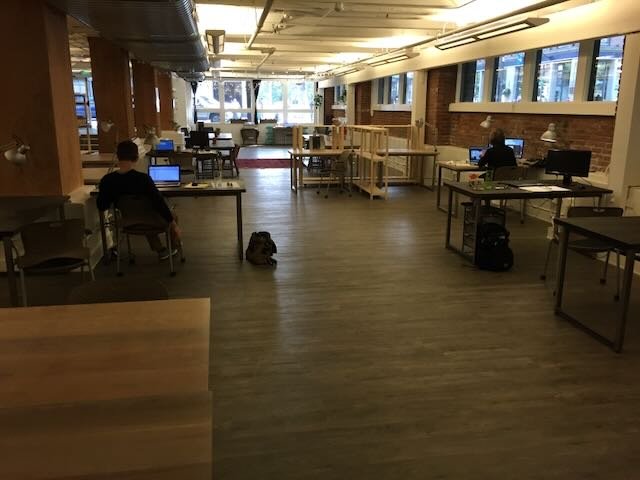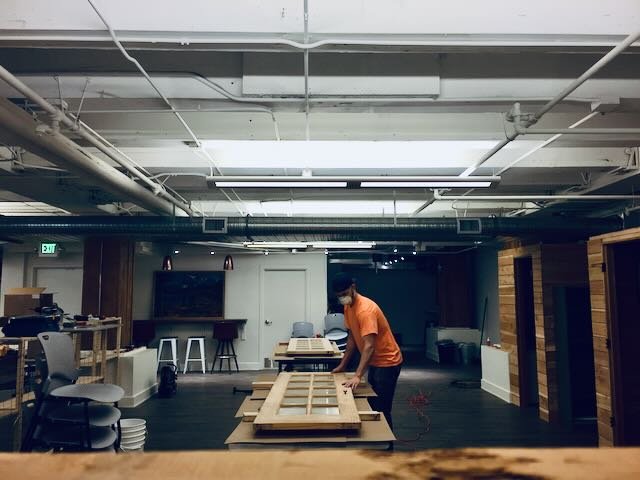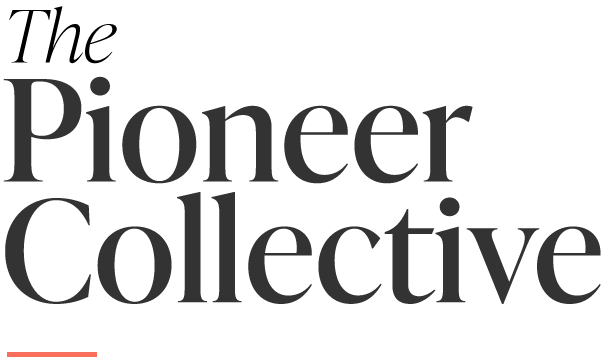Seeds 01: How Did You Get Started?
This is the inaugural installment of a blog feature I’ve been wanting to try for awhile. As a small business owner, I get asked the same questions over and over again. I used to think people were feigning interest and making conversation, but over the years I’ve accepted that many are actually curious about what it takes to run a small brick and mortar business.
There is no shortage of content about growth startups, side hustles, and internet-based businesses. There are quite a few podcasts interviewing founders. Most of them recycle the same themes and provide shallow content cleaned up for a mainstream audience. See: How I Built This. There is also some excellent MBA-level content breaking down now legendary companies and the paths that brought them success. (My all-time favorite is Acquired. Check out the episode on Standard Oil!). In my opinion though, there is a dearth of good, honest, in-depth small business content. What does it take to run the local chain of bike shops? How much profit does that used bookstore owner make each year? How much capital does it take to start a bowling alley? I’ve always wanted to know the answers to those questions, more so now that I have context and experience from my own small business.
So in an attempt to fill that void, I am going to write a series of short blog posts detailing the questions I’m asked most frequently. Once I have exhausted the topic of my own company, I may see if other small business owners will consent to getting in the weeds with me.
But first, I’ll tackle the most common question people ask me: How did The Pioneer Collective get started? The short answer is that it was a circuitous and bumpy road. We don’t yet have an apocryphal origin story yet, though we should probably make one up. If we had, I’d already be done writing this post.
Usually when people ask the question, they mean to ask one of the following subquestions, which I’ll answer individually.
How did you come up with the idea?
How did you come up with the money?
How long did it take you to become successful?
How did you come up with the idea?
We obviously didn’t come up with the idea of coworking, but we did think we were capable of putting a new spin on it. By 2014, there were hundreds of independent coworking spaces around the world, IWG/Regus had been operating for decades, and WeWork had begun expanding outside of New York. That being said, the industry was definitely still in its infancy at that point.
Our path to coworking was indirect. The year prior to founding TPC was full of activity and change for Audrey and me. We got married in 2013 and both left our corporate jobs to travel. We spent time in Central America and Europe working on a travel startup and while in Spain, we both fell in love with the built environment there and developed a passion for reactivating historic buildings. At the time, the design principles and placemaking in Europe seemed like it was lightyears ahead of what we were seeing back home in the U.S. and that’s probably where the spark for The Pioneer Collective ignited, though it didn’t become a fully formed idea until later. When we returned home to Seattle, Audrey enrolled in the respected Interior Design program at Bellevue College as well as the Runstad Commercial Real Estate certificate program at The University of Washington. I continued to work on my startup with my New York based co-founder, living the fully remote life seven years before it became the norm. I eventually got tired of working out of my apartment all day and rented a desk at an early coworking space on Capitol Hill.
It wasn’t long before Audrey had the idea to create a real life portfolio project, building a coworking space in a beautiful, historic building. The initial thought was that this would be a small office-share project that would provide subsidized office space for me to work out of, and maybe some supplemental income, but it was definitely more an exercise in indulging our shared passion for design than a plan to create careers for ourselves. After touring a few buildings, we eventually landed on a 1st floor “garden level” space in Seattle’s historic Pioneer Square neighborhood. The building had originally housed a plumbing manufacturing facility, was later converted into a popular Italian restaurant in the 1980s, and had most recently been used as a construction office. It wasn’t in good shape when we saw it, but the old growth timber beams and brick walls sold us on its potential. The problem was the space was about 5x bigger than what we were looking for. For this space to work, we’d need more than just a few startups sharing office costs, we’d need to sell memberships to dozens of freelancers and remote workers like us and drive real revenue. Perhaps naively, we believed we could do it. Audrey drew up a business plan and successfully pitched the owner of the building. For the next seven months we designed and built out the physical space and the operations for the building from scratch. In the summer of 2015 we opened our doors for business and waited to see if anyone would join us.



How did you come up with the money?
We spent about $50,000 starting TPC. One of my gripes with founder interviews is that entrepreneurs tend to avoid this question or are intentionally vague. Saying things like “I only took a small loan from my parents” or “we put everything on my credit card” can be confusing to the audience. It certainly isn’t a lot of money in the world of business investing, but for many people, $50,000 might as well be $5 million.
The truth is, if you don’t already have money, starting a business will be much tougher. It’s not impossible, and one could argue there is a mindset advantage that comes with a less advantaged background, but businesses are expensive to start and are both time and capital intensive. A founder will need to dedicate all their time to nurturing a fledgling venture, incurring the opportunity cost of not being paid for a 9-5. Depending on the type of business, they’ll probably also need tens if not hundreds of thousands of dollars to go from idea to prototype to “open for business.”
Audrey and I were quite fortunate that we both graduated from college debt free (thanks to our parents) and we both worked in relatively lucrative jobs before striking out on our own. Audrey’s parents both worked careers and finance and had the foresight to start investing for her when she was young. In short, because of the hard work and generosity of our families, when the time came, we were able to sell some of these investments to make a “small” $50,000 investment in our new business. We owe a debt of gratitude to all four of our parents. Because of them, we didn’t have to go into debt, and we have a very simple two person cap table (i.e. no investors)*. We have managed to carry this structure forward as we’ve grown, funding all expansion with cash flows from existing operations.
So where did that initial money go? Roughly:
$3,000 went to lawyers and company formation overhead
$12,000 went to a security deposit for the lease (we also had to sign a $50,000 personal guarantee, something I plan to write about at length in the future)
The balance of $35,000 went to furniture, fixtures, equipment, marketing, and light construction. The landlord kicked in money to get the space up to rentable condition (floors, paint, wiring etc)
In other words, our money went very quickly and by the time we opened, we were immediately under pressure to start filling the bank account back up through sales.
*So what do you do if you want to start a business but don’t have an existing bankroll to work with? Read my post on One Essential Rule for Financing A Small Business
How long did it take you to become successful?
The way we define success has changed over time. At first, we just hoped to create something that sustained itself. As mentioned previously, as we started building the business plan, our goal became creating a real business that could support us. Almost 10 years in, we still want to pay ourselves, but we measure success by the customer experience we provide, our reputation, and our ability to hire and retain great people.
Back in 2015 we went through a life change that raised the stakes and cranked up the stress levels significantly. Our first child was born the same month we finished construction and soft-opened TPC.
It took until the end of year one, roughly the middle of 2016, for the panic to subside. By this point we were making enough money to cover rent and basic expenses and bankruptcy and utter failure felt unlikely (but still possible).
In year two, I took a full time contract job in my old line of work so we could continue paying our mortgage and child care expenses. Our second child was born this year and by this time we were consistently making a monthly profit, but we couldn’t pay ourselves anywhere near replacement value of even one full time income.
By year three, revenue had really ramped up, we could take a real salary, and we had hired our first full time employee, which was a huge milestone. It was between the second half of 2018 and the beginning of 2020 that things really took off. By that point we had some brand recognition and three well-defined revenue streams. We had a small team and had grown our footprint, first expanding in our flagship location and then opening a second location in Tacoma.
In the last quarter of 2019 and first two months of 2020, we achieved record revenue and profits and we finally felt like we’d created something successful.
I’m at the point now where I consciously try to slow down and enjoy the success we’ve had. That being said, as an entrepreneur, my natural state is one of striving and I think that applies to everyone who works at TPC. We don’t work ourselves to death, but we’re happy iterating and obsessing about how to improve our operations, our product, our strategy.
